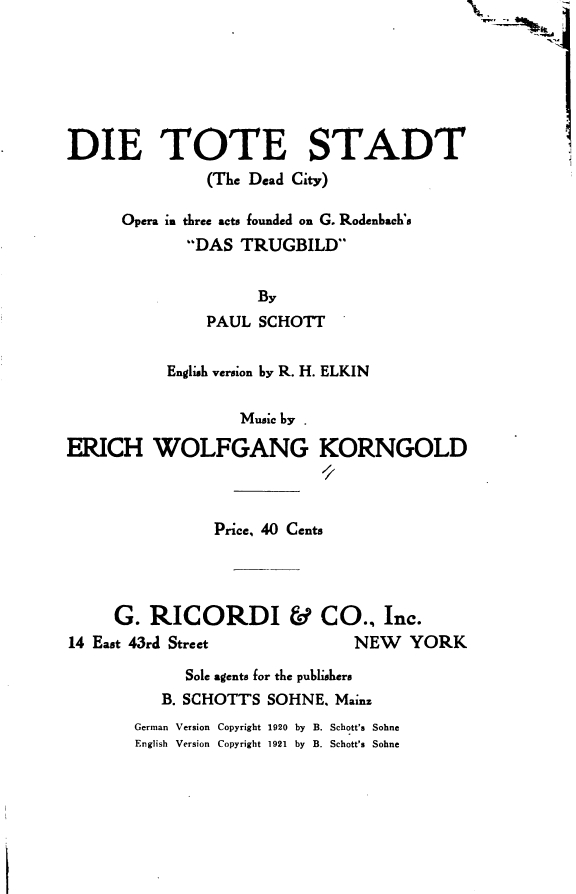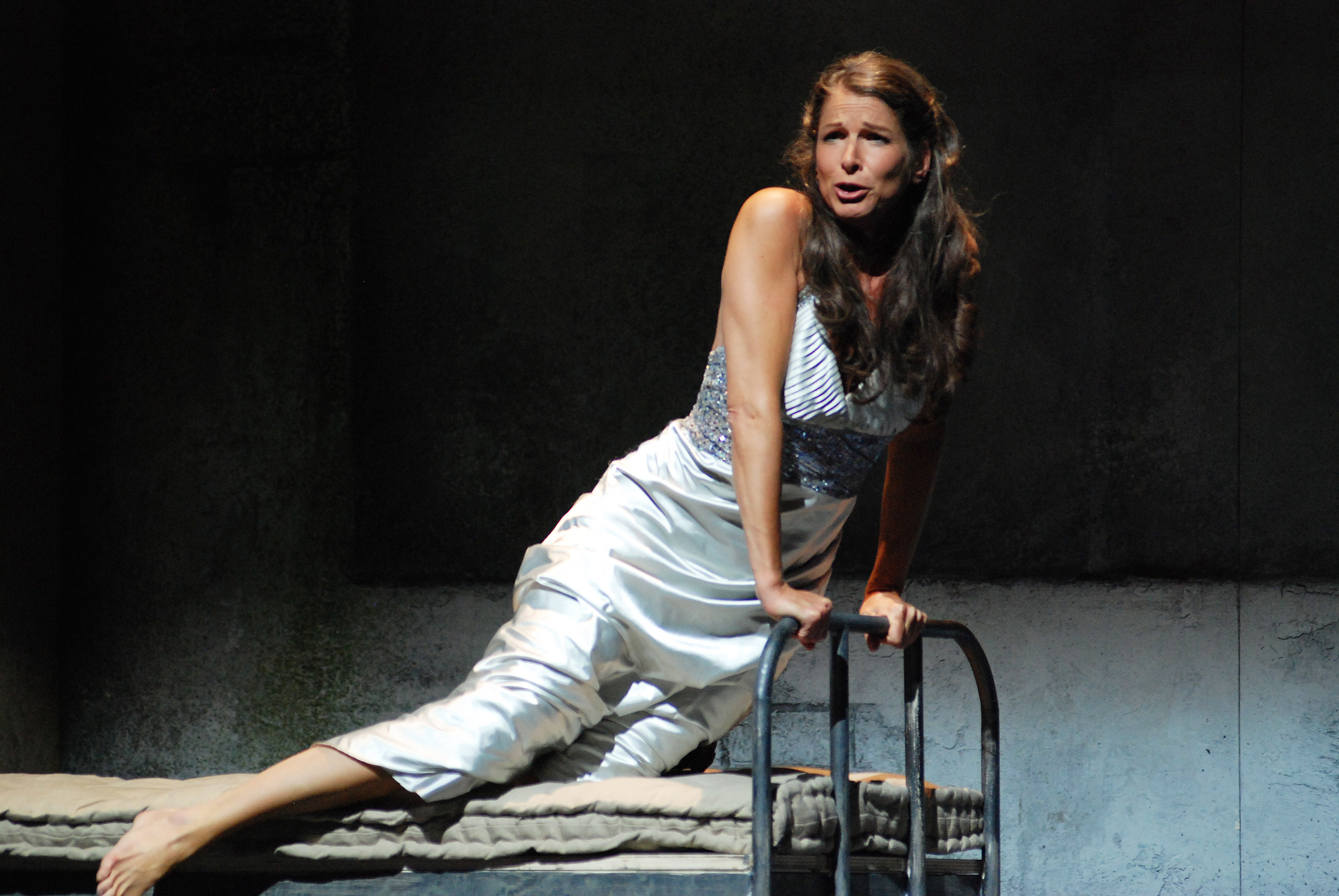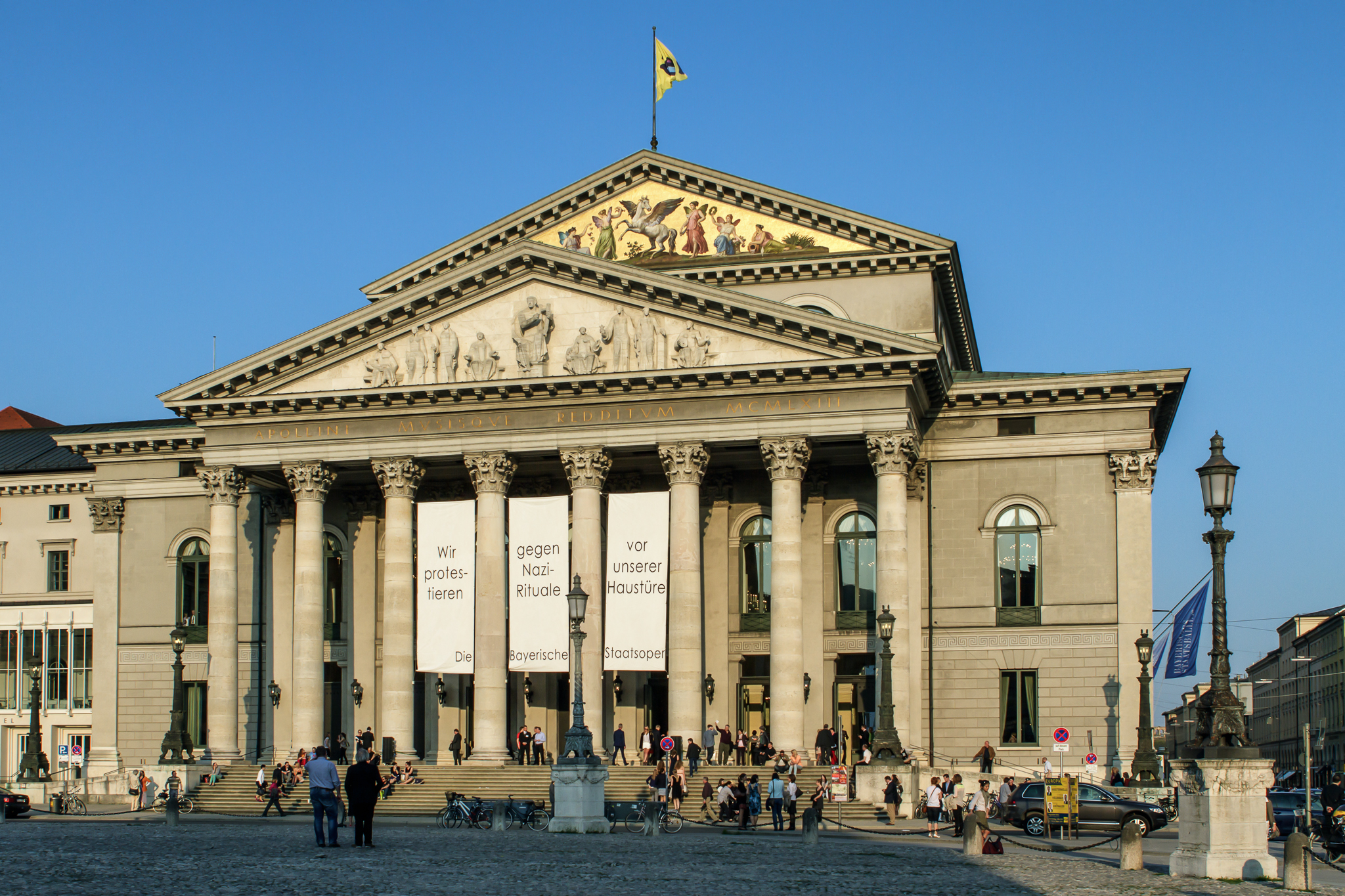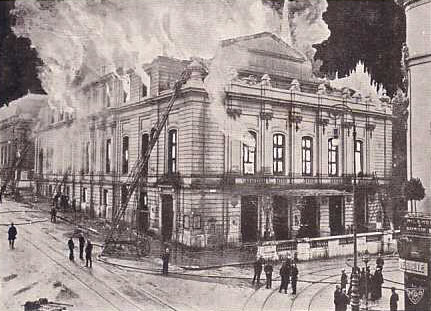|
Karl Aagaard Østvig
Karl Aagaard Østvig (sometimes Germanized to Oestvig) (17 May 1889 – 21 July 1968) was a Norwegian operatic tenor, opera director, and voice teacher. The Norwegian Music History Archive states that he is the greatest dramatic tenor in Norwegian history, and that he was particularly admired for his portrayals in operas by Giacomo Puccini, Richard Strauss and above all Richard Wagner. His voice was described by soprano Lotte Lehmann as “a dazzling meteor.” Although he toured internationally in concerts, operas, and recitals, his singing career was mainly centered in Austria and Germany from his debut in 1914 up until his retirement from the stage in 1933. From 1932 on he lived in Oslo where he was primarily active as an opera director and singing teacher. He made only a few recordings during his career, all for Polydor Records. [...More Info...] [...Related Items...] OR: [Wikipedia] [Google] [Baidu] |
Karl Aagaard Østvig
Karl Aagaard Østvig (sometimes Germanized to Oestvig) (17 May 1889 – 21 July 1968) was a Norwegian operatic tenor, opera director, and voice teacher. The Norwegian Music History Archive states that he is the greatest dramatic tenor in Norwegian history, and that he was particularly admired for his portrayals in operas by Giacomo Puccini, Richard Strauss and above all Richard Wagner. His voice was described by soprano Lotte Lehmann as “a dazzling meteor.” Although he toured internationally in concerts, operas, and recitals, his singing career was mainly centered in Austria and Germany from his debut in 1914 up until his retirement from the stage in 1933. From 1932 on he lived in Oslo where he was primarily active as an opera director and singing teacher. He made only a few recordings during his career, all for Polydor Records. [...More Info...] [...Related Items...] OR: [Wikipedia] [Google] [Baidu] |
Staatsoper Stuttgart
The Staatsoper Stuttgart (Stuttgart State Opera) is a German opera company based in Stuttgart, the capital of Baden-Württemberg, Germany. The Staatsorchester Stuttgart serves as its resident orchestra. History Performances of operas, ballet and plays in Stuttgart took place from the 17th century at the hall of . The probably first opera production was in 1660 the singspiel ''Der Raub der Proserpina'' by Hofkapellmeister Samuel Capricornus. Four years later, a permanent stage was established. In 1750, the building was remodeled as Stuttgart's opera house, named ''Königliches Hoftheater'' (Royal Court Theatre) in 1811. It burnt down in 1902, and opera was performed in a provisional ''Interimstheater''. Today's opera house was built from 1909 to 1912 by architect Max Littmann from Munich, with two halls, ''Großes Haus'' and ''Kleines Haus''. After the end of the monarchy in 1918, the theatres were named ''Württembergische Landestheater''. The ''Kleines Haus'', site of the world ... [...More Info...] [...Related Items...] OR: [Wikipedia] [Google] [Baidu] |
Carmen
''Carmen'' () is an opera in four acts by the French composer Georges Bizet. The libretto was written by Henri Meilhac and Ludovic Halévy, based on the Carmen (novella), novella of the same title by Prosper Mérimée. The opera was first performed by the Opéra-Comique in Paris on 3 March 1875, where its breaking of conventions shocked and scandalised its first audiences. Bizet died suddenly after the 33rd performance, unaware that the work would achieve international acclaim within the following ten years. ''Carmen'' has since become one of the most popular and frequently performed operas in the classical Western canon, canon; the "Habanera (aria), Habanera" from act 1 and the "Toreador Song" from act 2 are among the best known of all operatic arias. The opera is written in the genre of ''opéra comique'' with musical numbers separated by dialogue. It is set in southern Spain and tells the story of the downfall of Don José, a naïve soldier who is seduced by the wiles of th ... [...More Info...] [...Related Items...] OR: [Wikipedia] [Google] [Baidu] |
Tosca
''Tosca'' is an opera in three acts by Giacomo Puccini to an Italian libretto by Luigi Illica and Giuseppe Giacosa. It premiered at the Teatro dell'Opera di Roma, Teatro Costanzi in Rome on 14 January 1900. The work, based on Victorien Sardou's 1887 French-language dramatic play, ''La Tosca'', is a melodramatic piece set in Rome in June 1800, with the Kingdom of Naples's control of Rome threatened by Napoleon's Campaigns of 1800 in the French Revolutionary Wars#Italy, invasion of Italy. It contains depictions of torture, murder, and suicide, as well as some of Puccini's best-known lyrical arias. Puccini saw Sardou's play when it was touring Italy in 1889 and, after some vacillation, obtained the rights to turn the work into an opera in 1895. Turning the wordy French play into a succinct Italian opera took four years, during which the composer repeatedly argued with his librettists and publisher. ''Tosca'' premiered at a time of unrest in Rome, and its first performance was delayed ... [...More Info...] [...Related Items...] OR: [Wikipedia] [Google] [Baidu] |
Die Tote Stadt
' (German for ''The Dead City''), Op. 12, is an opera in three acts by Erich Wolfgang Korngold set to a libretto by Paul Schott, a collective pseudonym for the composer and his father, Julius Korngold. It is based on the 1892 novel '' Bruges-la-Morte'' by Georges Rodenbach. Origins Rodenbach's novel ' had already been adapted by the author into a play. The play was translated into German by Siegfried Trebitsch under the title ' (''The Silent City''), which he later changed to ' (''The Mirage''). Trebitsch was a friend of Korngold's father, Julius. The two met in the street one day and got into a conversation about a possible operatic adaptation. Trebitsch later met Erich, who was enthusiastic about the project. Trebitsch recalled " met the young master Erich Wolfgang Korngold in search of a scenario or, even better, a mood or operatic background that could be dramatically elaborated. I urged him to take up '."Carroll, Brendan G.; Pauly, Reinhard G., ''The Last Prodigy: A Biography ... [...More Info...] [...Related Items...] OR: [Wikipedia] [Google] [Baidu] |
Ariadne Auf Naxos
(''Ariadne on Naxos''), Op. 60, is a 1912 opera by Richard Strauss with a German libretto by Hugo von Hofmannsthal. The opera's unusual combination of elements of low commedia dell'arte with those of high opera seria points up one of the work's principal themes: the competition between high and low art for the public's attention. First version (1912) The opera was originally conceived as a 30-minute divertissement to be performed at the end of Hofmannsthal's adaptation of Molière's play ''Le Bourgeois gentilhomme.'' Besides the opera, Strauss provided incidental music to be performed during the play. In the end, the opera occupied ninety minutes, and the performance of play plus opera occupied over six hours. It was first performed at the Hoftheater Stuttgart on 25 October 1912, directed by Max Reinhardt. The combination of the play and opera proved to be unsatisfactory to the audience: those who had come to hear the opera resented having to wait until the play finished. ... [...More Info...] [...Related Items...] OR: [Wikipedia] [Google] [Baidu] |
Maria Jeritza
Maria Jeritza (born Marie Jedličková; 6 October 1887 – 10 July 1982) was a dramatic soprano, long associated with the Vienna State Opera (1912–1934 and 1950-1953) and the Metropolitan Opera (1921–1932 and 1951). Her rapid rise to fame, beauty and personality earned her the nickname "The Moravian Thunderbolt". Biography Jeritza was born in Brno, Moravia, then part of the Austro-Hungarian Empire, in 1887 as Marie Jedličková. She was trained at the Brno Conservatory, and later was a pupil of Estelle Liebling in New York City. In 1910, she made her debut as ''Elsa'', in Wagner's ''Lohengrin'', at Olomouc. The Emperor Franz Josef heard her and immediately ordered that she be offered a contract at the Imperial Hofoper, Vienna. She created the roles of ''Blanchefleur'' in Kienzl's opera '' Der Kuhreigen'' (1911), Ariadne in Strauss's ''Ariadne auf Naxos'' (1912), the Empress in his ''Die Frau ohne Schatten'' (1919), and Hariette/Juliette in Korngold's ''Die tote St ... [...More Info...] [...Related Items...] OR: [Wikipedia] [Google] [Baidu] |
Die Frau Ohne Schatten
' (''The Woman without a Shadow''), Op. 65, is an opera in three acts by Richard Strauss with a libretto by his long-time collaborator, the poet Hugo von Hofmannsthal. It was written between 1911 and either 1915 or 1917. When it premiered at the Vienna State Opera on 10 October 1919, critics and audiences were unenthusiastic. Many cited problems with Hofmannsthal's complicated and heavily symbolic libretto. However, it is now a standard part of the operatic repertoire. Composition history Work on the opera began in 1911. Hofmannsthal's earliest sketches for the libretto are based on a piece by Goethe, ' (1795). Hofmannsthal handles Goethe's material freely, adding the idea of two couples, the emperor and empress who come from another realm, and the dyer and his wife who belong to the ordinary world. Hofmannsthal also drew on portions of ''The Arabian Nights'', ''Grimms' Fairy Tales'', and even quotes Goethe's ''Faust''. The opera is conceived as a fairy tale on the theme of lo ... [...More Info...] [...Related Items...] OR: [Wikipedia] [Google] [Baidu] |
Vienna State Opera
The Vienna State Opera (, ) is an opera house and opera company based in Vienna, Austria. The 1,709-seat Renaissance Revival venue was the first major building on the Vienna Ring Road. It was built from 1861 to 1869 following plans by August Sicard von Sicardsburg and Eduard van der Nüll, and designs by Josef Hlávka. The opera house was inaugurated as the "Vienna Court Opera" (''Wiener Hofoper'') in the presence of Emperor Franz Joseph I and Empress Elisabeth of Austria. It became known by its current name after the establishment of the First Austrian Republic in 1921. The Vienna State Opera is the successor of the old Vienna Court Opera (built in 1636 inside the Hofburg). The new site was chosen and the construction paid by Emperor Franz Joseph in 1861. The members of the Vienna Philharmonic are recruited from the Vienna State Opera's orchestra. The building is also the home of the Vienna State Ballet, and it hosts the annual Vienna Opera Ball during the carnival season. ... [...More Info...] [...Related Items...] OR: [Wikipedia] [Google] [Baidu] |
Bavarian State Opera
The Bayerische Staatsoper is a German opera company based in Munich. Its main venue is the Nationaltheater München, and its orchestra the Bayerische Staatsorchester. History The parent ensemble of the company was founded in 1653, under Electress consort Princess Henriette Adelaide of Savoy, when Giovanni Battista Maccioni's ''L'arpa festante'' was performed in the court theatre. In 1753, the Residence Theatre (Cuvilliés Theatre) was opened as a major stage. While opera performances were also held in the Prinzregententheater (completed in 1901), the company's home base is the Nationaltheater München on Max-Joseph-Platz. In 1875, the Munich Opera Festival took place for the first time. Sir Peter Jonas became the general manager in 1993, the first British general manager of any major German-speaking opera house. In 2008, Nikolaus Bachler became Intendant (general manager) of the opera company, and Kirill Petrenko became Generalmusikdirektor (GMD) in 2013. In 2014, the ... [...More Info...] [...Related Items...] OR: [Wikipedia] [Google] [Baidu] |
Theater Basel
Theater Basel is the municipal theatre of the city of Basel, Switzerland, which is home to the city's opera and ballet companies. The theatre also presents plays and musicals in addition to operas and operettas. Because the theatre does not have its own orchestra, the Basel Symphony Orchestra is usually contracted to perform for opera and ballet productions as needed. For baroque-opera productions, La Cetra, the baroque orchestra of the Schola Cantorum Basiliensis, is engaged. History Theater Basel was founded in 1834 under the name Basler Stadttheater. The first theatre was designed by Swiss architect Melchior Berri. In 1873 work on a new theatre began which was designed by Johann Jakob Stehlin Jr.. This second theatre opened in 1875 and was used until it was destroyed by fire on 7 October 1904. Plans for a third theatre were soon made, but it was five years before the theatre finally opened in 1909. The fourth theatre opened in 1975. In October 2018, the company announ ... [...More Info...] [...Related Items...] OR: [Wikipedia] [Google] [Baidu] |
The Grove Dictionary Of Music And Musicians
''The New Grove Dictionary of Music and Musicians'' is an encyclopedic dictionary of music and musicians. Along with the German-language ''Die Musik in Geschichte und Gegenwart'', it is one of the largest reference works on the history and theory of music. Earlier editions were published under the titles ''A Dictionary of Music and Musicians'', and ''Grove's Dictionary of Music and Musicians''; the work has gone through several editions since the 19th century and is widely used. In recent years it has been made available as an electronic resource called ''Grove Music Online'', which is now an important part of ''Oxford Music Online''. ''A Dictionary of Music and Musicians'' ''A Dictionary of Music and Musicians'' was first published in London by Macmillan and Co. in four volumes (1879, 1880, 1883, 1889) edited by George Grove with an Appendix edited by J. A. Fuller Maitland in the fourth volume. An Index edited by Mrs. E. Wodehouse was issued as a separate volume in 1890. In 1 ... [...More Info...] [...Related Items...] OR: [Wikipedia] [Google] [Baidu] |






